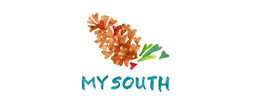There’s no better day to think about the color GREEN than St. Patrick’s Day, of course! From the renewal of spring to the warmth of tropical waters, the color green brings a calming influence to this upsized color month journey and to design color palettes. All colors carry unspoken messages based on cultural influences, historical references and even our own bodies’ physical reactions. Let’s look at what the color green communicates.
GENERAL IMPRESSIONS:
Green is one of the most prevalent colors found in nature and offers one of the widest arrays of approachable choices in the spectrum. Because it is linked to so many various shades in nature, multiple tones of green are rarely perceived to “clash” with one another. Abundance in the natural world gives the color a near universal appeal and very strong positive associations. This prevalence allows green to be used almost like a neutral in many color palettes, serving various roles from a grounding undertone to a calming influence to a striking counterpoint.
COLOR VARIATIONS:
The many shades and hues of green offer varying associations that can appeal to nearly any audience. Blue green tones almost always elicit a pleasant response from viewers because they are so closely related to earth and sky. These colors are perceived as clean and cool, but also warm like the tropical waters they evoke. Blue greens are typically very soothing and are flattering to most skin tones. Lighter mint greens are seen as refreshing and easily invoke sweet thoughts of chocolate and the taste of mint leaves. While brighter greens generally connote renewal by embodying spring, fresh grass and leaf buds, deeper greens are often associated with the mysterious silence of deep forests. Both call to mind refreshing scents, but the associations with deeper greens expand to suggest prestige, security and trustworthiness because of their use in American money.
Among the lesser-used greens, bright emerald signifies elegance and is also strongly associated with the Irish heritage. Yellow-greens can be used effectively for projects related to gardening or florals because they resemble new growth. The sharper tone of chartreuse is perceived as trendy and an attention-getter that gives a youthful feel appealing to children and teens. Olive tones can be seen as up-scale but sometimes require stronger colors companions to pull them away from a staid neutral role.
NEGATIVE ASSOCIATIONS:
Among green’s negative associations, it is sometimes used in cultural terminology to represent jealousy, envy or inexperience. In addition, some shades of yellow-green are actually associated with nausea and illness, and create adverse reactions.
Overall, the design possibilities of the color green seem almost as endless as the various shades we see outside our window. It has obvious environmental appeal as well positive concepts like cleanliness, growth and reliability. Personally, I like green’s ability to shift from that reliability right into an added kick of excitement with only a touch of blue or yellow added to the mix. And, of course, you know any small pond dweller has to appreciate a few green frogs. Enjoy wearing green today!










 Hello & welcome! I’m Haley Montgomery, and I’m the designer and owner of
Hello & welcome! I’m Haley Montgomery, and I’m the designer and owner of 















